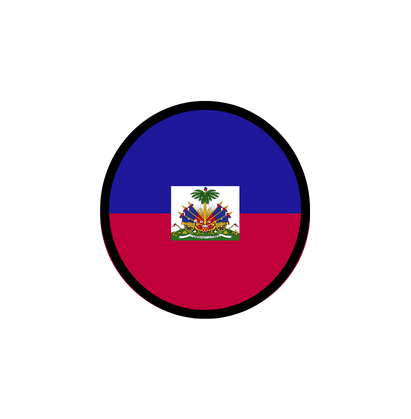








Most immigrants leave their country of origin in search of a better life or safety. The United States has been transformed, built, and defined by a surge of migration from nearly every region of the world. Many immigrants migrate to a new country not knowing where to start and some migrate without shelter, work, or any other vital necessity.
Every immigrant’s story looks different, and each has their own set of obstacles when it comes to finding a job and shelter. It is critical that individuals who have come to the United States receive assistance to make their transition as comfortable as possible. A supported community of immigrants ensures good communication between neighbors and exposes all members of a community to new cultural experiences.
In this exhibit we will discuss how immigrant life and support services in Framingham have changed over time. This exhibit is meant to both serve as a reference for our immigrant communities and provide important information on the history of immigration in Framingham. Immigrating to a new place can be very challenging, but with the help of neighbors, local organizations and a fearless heart and courage, immigrants can find a home and flourish here.

At Work
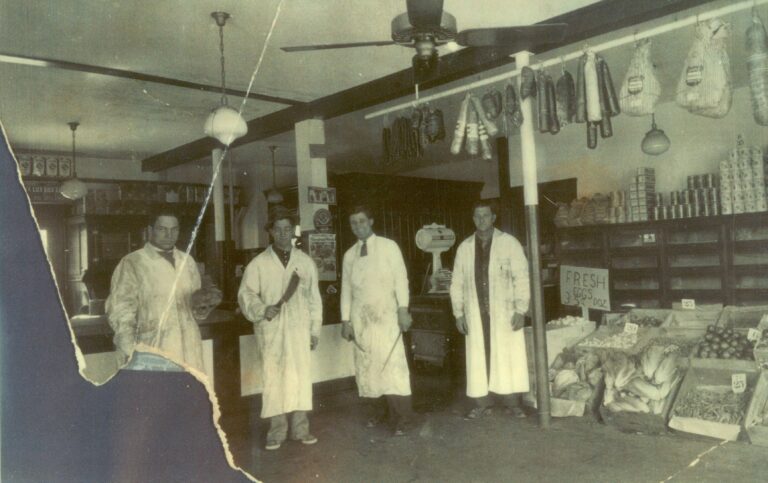
Food shop owned by Italian immigrants. (FHC Collections)
Immigrants are 12.5% of the US population and, according to the American Immigration Council, immigrant workers comprised 20% of the labor force in 2018. These workers contribute billions of dollars in taxes annually. In Framingham, immigrants make nearly 30% of the population, making them even more important to the local economy. Jobs allow immigrants to earn money for necessities like shelter, clothes, and food. Finding work is one of the most important steps an immigrant can take.
Immigrants to Framingham have acquired many different types of jobs to support their families since the 1840s. Irish and Jewish immigrants came to work in factories, Italians came to work in buildings and other architecture jobs, and Puerto Ricans came to do agricultural work. Once factories started closing in the 1980’s many immigrants began working for small businesses. They even started their own businesses like restaurants, shops, and house cleaning.
When first arriving in a completely new environment it can be difficult to find jobs unless you already have a local connection with a friend or family member. Immigrants who have existing networks in their new country can find a job shortly after arrival. Those who don’t have connections often need to make them before they can find work. These can be found in places where they can connect with other immigrants like churches and community centers.
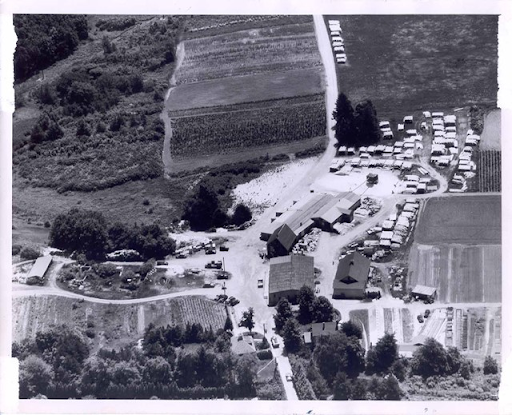
Wyman’s Nursery and Garden Center employed many Puerto Rican agricultural workers in the 1940s and 1950s. (FHC Collections)
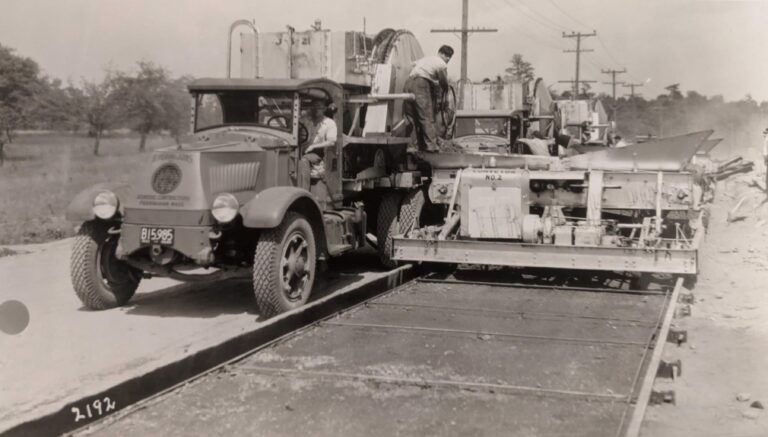
The Perini Corporation was founded in 1894 by Italian stonemason Bonfiglio Perini. (FHC Collections)
On Display: The Tools of Immigrant Work, 1880s - 2004
Perini Corporation Hard Hat, ca. 1990s – 2004.531.2
Trowel, 1905 – 2274
Ticket Printing Counter – 2003.714
Wrench, ca. 1880 – 1999.2.13
Bobbin Spool, ca. 1880 – 1999.2.16
These tools were used for construction and manufacturing by immigrant workers in the 1880s – 2004. These tools are important artifacts because they are a visual representation of the jobs immigrant workers participated in. It shows some of the variety of jobs immigrants worked in. For example, the Perini hard hat and the trowel were construction tools that many Italian immigrants used for masonry work and infrastructure projects. The ticket printing counter was a metal counter that kept track of production of the tag press for the day. It was part used in The Dennison Manufacturing Company which was the largest employer in Framingham for almost a century (late 1800s to late 1900s). The last two artifacts, the wrench and bobbin spool, were Roxbury carpet tools for the Roxbury Carpet Company in Saxonville, which was a major employer in Saxonville until it closed in 1973. These tools were used for carpet making and in machine maintenance/repairs.

In Schools

Framingham High school International club, 1992. (FHC Collections)
Immigrant education has changed significantly in Framingham since 1974. As late as 1971, schools in Massachusetts rarely offered language support for immigrant students or students speaking a language other than English. Support did not become a right until the 1974 Supreme Court decision in Lau v. Nichols. Framingham is now home to a variety of multilingual programs. Nearly 30% of students in Framingham’s public school system are learning English, with Portuguese or Spanish as their primary language.
The Framingham Public Schools Two-Way Bilingual Program was established in 1990 at the elementary school level and at Walsh
Middle School in 1998. The Two-Way Bilingual Program helps students become bilingual, progress academically in the classroom, and develop positive cross-cultural relationships and attitudes toward their own culture.
Transitional bilingual education (TBE) programs provide support in a home language while the pupil becomes proficient in English. In Framingham, TBE programs, available for students whose native language is Spanish or Portuguese, allow students to continue to work academically at their grade level while they learn English. Once a student reaches an intermediate level of proficiency in English, they will transfer to a sheltered English classroom until they are ready to move into a standard curriculum classroom.

The Framingham TAB article about ESL teacher, 2006. Courtesy Genoveffa Grieci

FHS Bilingual class, 2001. Courtesy Genoveffa Grieci
Multilingual educational programs offered by Framingham Public Schools now support all students, not only families who speak foreign languages, but also for monolingual English speakers who will have the opportunity to be bilingual. Today, both immigrant and native-born parents can choose the types of programs they want their children to participate in. The needs and opportunities of multilingual students are now seen and heard, and with the right guidance and support, they can grow and reach their potential. Monolingual children also benefit from these programs, which enhance their communication skills.
On Display: Objects of Bilingual students from Genoveffa Grieci
I’m New Here written by Anne Sibley O’briden, 2015
Painting of a Streetscape, Italy
Wooden Box, Peru
Doll, Peru
Ceramic bowl, Spain
Loaned by Genoveffa Grieci
Here are all collections by Genoveffa Grieci, a teacher in the ESL program at Framingham High School. These gifts are very important to her because they were given by her students and each object has a history, an origin and a very important meaning. For example, the Italy frame was given to Genoveffa by a student who traveled to Italy to see her family (the family was originally from Brazil and had dual citizenship in Italy as well). The ceramic portrait was reminiscent of Genoveffa’s country, as she was born there. The Box and doll from Peru was gifted to Geonoveffa by Violeta Zamora, who works at the high school in the ESL/Bilingual Dept. She has supported students and programs for over 10 years.

Communication

Framingham Adult ESL+ classes pose with the Shoppers World sign. Credit: Edgar Villagran.
Differences in language and culture can make it difficult for immigrants to adjust to a new country. Communication is the key to accessing a job, health care, and many more resources. Most importantly, it allows a person to connect with neighbors, new friends, shopkeepers, doctors, and everyone around us. This “human connection” is what people miss the most when they cannot communicate with each other. To help new immigrants through this transition, Framingham offers a diversity of services to welcome all people who need help adapting.
New immigrants can find a diversity of languages in public spaces in Framingham. For instance, in the Framingham Public Schools, there are multilingual teachers and staff to assist new immigrants, as well as signs and information written in multiple languages. MetroWest Medical Center furnishes free translators for immigrants while providing necessary medical services. Framingham Public Library has large sections of foreign-language books and resources for recent immigrants. Including diversity in all public spaces makes immigrants’ lives easier and helps them adapt.
English as a Second Language (ESL) classes help immigrants thrive by giving them the skills to succeed. In 1914 Framingham began its first Adult Citizenship classes, which also taught ESL. By 1924 the department had 9 teachers and 240 students from Italy, Greece, Albania, and beyond, ranging in age from 16-60. Framingham Adult ESL (FAESL) Plus was started by a group of town meeting members in 1984. Their leveled program starts with basic identifying information and moves into more complex language.
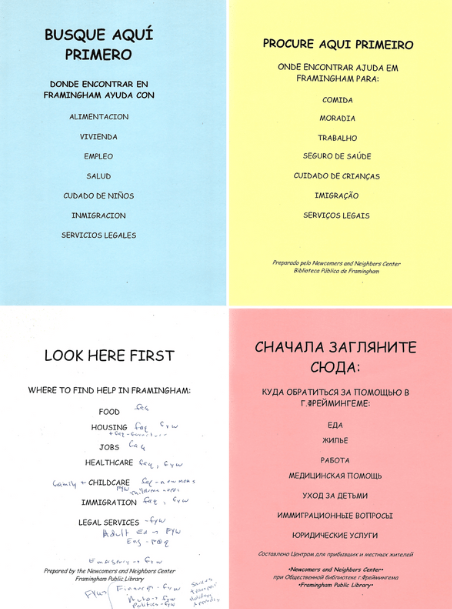
“Look Here First” pamphlets by the Framingham Public Library’s Newcomers and Neighbors Center, 1990s. (FHC Collections)
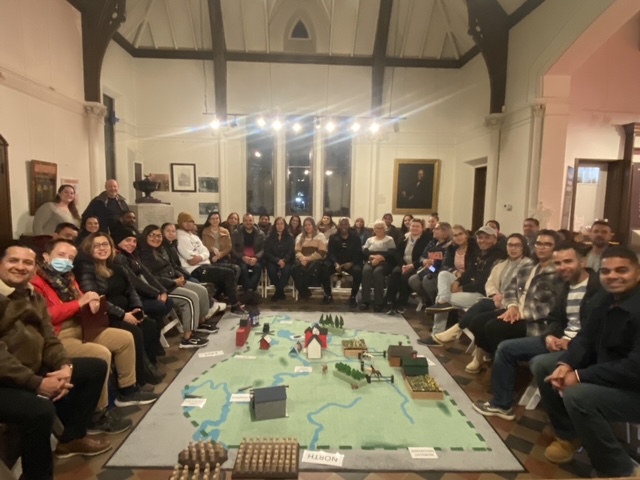
Framingham Adult ESL+ classes visit the Framingham History Center.
Even as they are learning English, immigrants in Framingham can experience culture shock. ESL classes for adults and children offer both language lessons and counseling in their home language. Counselors help immigrants get more comfortable with new surroundings and experiences, give them support such as health care information, and assistance signing up for services such as MassHealth and food stamps if they are eligible.
On Display: Diversity of language resources in Framingham
Campaign Button. 2015.28
Finding Your Way Booklets, 2007. 2022.50.25
Harmony Grove School Magnet, 2022. 2022.1
Dennison Spanish-English Dictionary, 1951. 2000.28.2
Dennison French-English Dictionary, 1959. 2014.48.4
Since 1984, Framingham has been a community that values immigrants and consistently provides tools to assist them when they are living there. These resources have expanded and now significantly influence the lives of immigrants. Services like FAESL, the Framingham Public Library, and Harmony Grove Elementary School were established to assist immigrants. The aim of these programs was to assist immigrants across several fields. They reached out to them and offered assistance in multiple languages. These programs have a daily influence on immigrant lives.





La mayoría de los inmigrantes abandonan su país de origen en busca de una mejor vida o seguridad. Estados Unidos ha sido transformado, construido y definido por una oleada de migración de casi todas las regiones del mundo. Muchos inmigrantes emigran a un nuevo país sin saber por dónde empezar y algunos migran sin techo, trabajo o cualquier otra necesidad vital.
La historia de cada inmigrante se ve diferente, y cada uno tiene su propio conjunto de obstáculos cuando se trata de encontrar trabajo y vivienda. Es fundamental que las personas que han venido a los Estados Unidos reciban asistencia para que su transición sea lo más cómoda posible. Una comunidad de inmigrantes apoyada asegura una buena comunicación entre vecinos y expone a todos los miembros de una comunidad a nuevas experiencias culturales.
En esta exhibición discutiremos cómo la vida de los inmigrantes y los servicios de apoyo en Framingham han cambiado con el tiempo. Esta exhibición está destinada tanto a servir como referencia para nuestras comunidades de inmigrantes como a proporcionar información importante sobre la historia de la inmigración en Framingham. Emigrar a un nuevo lugar puede ser muy desafiante, pero con la ayuda de los vecinos, las organizaciones locales y un corazón valiente, los inmigrantes pueden encontrar un hogar y prosperar aquí.
Esta exhibicion esta co-comisariada por el Centro de Historia de Framingham y tres estudiantes multilingues de la Escuela Secundaria de Framingham: Rose Boulay, Carlos Estrada, y Kailane Gomes. Gracias a nuestros socios en Framingham Cultural Council y Middlesex Savings Charitable Foundation por su apoyo a esta exhibicion.

En El Trabajo

Tienda de comida, propiedad de inmigrantes italianos. (Colecciones de FHC)
Los inmigrantes son el 12,5 % de la población de los EE. UU. y, según el American Immigration Council, los trabajadores inmigrantes constituían el 20 % de la fuerza laboral en 2018. Estos trabajadores aportan miles de millones de dólares anualmente. En Framingham, los inmigrantes representan casi el 30%% de la población, lo que los hace aún más importantes para la economía local. Los trabajos les permiten a los inmigrantes ganar dinero para necesidades como vivienda, ropa y comida. Encontrar trabajo es uno de los pasos más importantes que puede tomar un inmigrante.
Los inmigrantes de Framingham han adquirido muchos tipos diferentes de trabajos para mantener a sus familias desde la década de 1840. Los inmigrantes irlandeses y judíos vinieron a trabajar en fábricas, los italianos vinieron a trabajar en edificios y otros trabajos de arquitectura, y los puertorriqueños vinieron a trabajar en la agricultura. Una vez que las fábricas comenzaron a cerrar en la década de 1980, muchos inmigrantes comenzaron a trabajar para pequeñas empresas. Incluso comenzaron sus propios negocios como restaurantes, tiendas y limpieza de casas.
Cuando llega por primera vez a un entorno completamente nuevo, puede ser difícil encontrar trabajo a menos que ya tenga una conexión local con un amigo o familiar. Los inmigrantes que tienen redes existentes en su nuevo país pueden encontrar trabajo poco después de su llegada. Aquellos que no tienen conexiones a menudo necesitan hacerlas antes de poder encontrar trabajo. Estos se pueden encontrar en lugares donde pueden conectarse con otros inmigrantes como iglesias y centros comunitarios.

Wyman ‘s Nursery and Garden Center empleó a muchos trabajadores agrícolas puertorriqueños en los años 1940 y 1950. (Colecciones de FHC)

La Corporación Perini fue fundada en 1894 por el cantero italiano Bonfiglio Perini. (Colecciones de FHC)
Hay muchas organizaciones que ayudan a los trabajadores inmigrantes a superar los obstáculos para conseguir trabajo, vivienda y otros recursos. La Coalición MIRA (Inmigrante y Refugiado de Massachusetts) es la organización más grande de Nueva Inglaterra que ayuda económica y socialmente a inmigrantes y refugiados. La Oficina para Refugiados e Inmigrantes (ORI) ofrece ayuda para encontrar cobertura médica, servicios de empleo y obtener la ciudadanía. Ambas organizaciones obtienen millones de dólares cada año para ayudar a inmigrantes y refugiados.
En Exhibicion: Las Herramientas del Trabajo de los Inmigrantes 1880s - 2004
Casco Corporación Perini, ca. 1990s. 2004.531.2
Plancha, 1905. 2274
Mostrador de Impresión de Boletos. 2003.714
Alicate, ca. 1880. 1999.2.13
Carrete de Bobina, ca. 1880. 1999.2.16
Estas herramientas fueron utilizadas para la construcción y la fabricación por trabajadores inmigrantes entre 1880 y 2004. Estas herramientas son artefactos importantes porque son una representación visual de los trabajos en los que se desempeñaban los trabajadores inmigrantes. Muestra parte de la variedad de trabajos en los que trabajaban los inmigrantes. Por ejemplo, el casco Perini y la plancha eran herramientas de construcción que muchos inmigrantes italianos usaban para trabajos de albañilería y proyectos de infraestructura. El mostrador de impresión de boletos era un mostrador de metal que realizaba un seguimiento de la producción fuera de la prensa de etiquetas durante el día. Se utilizó en parte en La Empresa de Fabricacion Dennison, que fue el empleador más grande en Framingham durante casi un siglo (finales del siglo 19 hasta finales del siglo 20). Los dos últimos artefactos, el alicate y el carrete de la bobina, eran herramientas para alfombras de Roxbury para la Compañía de Carpetas de Roxbury en Saxonville, que era un empleador importante en Saxonville hasta que cerró en 1973. Estas herramientas se usaban para fabricar alfombras y en el mantenimiento/reparación de máquinas.

En Las Escuelas

Club Internacional de la Escuela Secundaria de Framingham, 1992. (Colecciones de FHC)
La educación de los inmigrantes ha cambiado significativamente en Framingham desde 1974. Todavía en 1971, las escuelas de Massachusetts rara vez ofrecían apoyo lingüístico a los estudiantes inmigrantes oa los estudiantes que hablaban un idioma distinto al inglés. La manutención no se convirtió en un derecho hasta la decisión de la Corte Suprema de 1974 en Lau v. Nichols. Framingham es ahora el hogar de una variedad de programas multilingües. Casi el 30% de los estudiantes en el sistema de escuelas públicas de Framingham están aprendiendo inglés, con portugués o español como idioma principal.
El programa bilingüe bidireccional de las escuelas públicas de Framingham se estableció en 1990 a nivel de escuela primaria y en la escuela secundaria Walsh en 1998. El programa bilingüe bidireccional ayuda a los estudiantes a ser bilingües, progresar académicamente en el salón de clases y desarrollar relaciones interculturales positivas. y actitudes hacia su propia cultura.
Los programas de educación bilingüe de transición (TBE) brindan apoyo en el idioma del hogar mientras el alumno domina el inglés. En Framingham, los programas TBE, disponibles para estudiantes cuya lengua materna es el español o el portugués, les permiten continuar trabajando académicamente a su nivel de grado mientras aprenden inglés. Una vez que un estudiante alcance un nivel intermedio de competencia en inglés, será transferido a un salón de clases de inglés protegido hasta que esté listo para pasar a un salón de clases con plan de estudios estándar.

El artículo de Framingham TAB sobre el profesor de ESL, 2006. Cortesía de Genoveffa Grieci

Clase bilingüe de FHS, 2001. Cortesía de Genoveffa Grieci
Los programas educativos multilingües ofrecidos por las Escuelas Públicas de Framingham ahora apoyan a todos los estudiantes, no solo para familias de otros idiomas extranjeros sino también para hablantes monolingües de inglés que tendrán la oportunidad de ser bilingües. Hoy en día, tanto los padres inmigrantes como los nativos pueden elegir los tipos de programas en los que quieren que participen sus hijos. Las necesidades y oportunidades de los estudiantes multilingües ahora se ven y se escuchan, y con la orientación y el apoyo adecuados, pueden crecer y alcanzar sus objetivos. potencial. Los niños que son monolingües aquí también se benefician de estos programas, que mejoran sus habilidades de comunicación.
En Exhibicion: Objetos de Estudiantes Bilingües de Genoveffa Grieci
I’m New Here escrito por Anne Sibley O’briden, 2015
Pintura de un paisaje urbano, Italia
Caja de madera, Perú
Muñeca, Perú
Taza de Cerámica, España
Prestado por Genoveffa Grieci
Aquí están todas las colecciones de Genoveffa Grieci, profesora del programa ESL en la escuela secundaria de Framingham. Estos regalos son muy importantes para ella porque fueron entregados por sus alumnos y cada objeto tiene una historia, un origen y un significado muy importante. Por ejemplo, el marco de Italia se lo dio a Genoveffa un estudiante que viajó a Italia para ver a su familia (la familia era originaria de Brasil y también tenía doble ciudadanía en Italia). El retrato de cerámica recordaba el país de Genoveffa, ya que ella nació allí. La caja y la muñeca de Perú fueron obsequiadas a Genoveffa por Violeta Zamora, quien trabaja en la escuela secundaria en el Departamento de ESL/Bilingüe. Ha apoyado a estudiantes y programas durante más de 10 años.

Comunicación

Las clases de ESL+ para adultos de Framingham posan con el letrero Shoppers World. Crédito: Edgar Villagrán.
Las diferencias en el idioma y la cultura pueden dificultar que los inmigrantes se adapten a un nuevo país. La comunicación es la clave para acceder a un trabajo, atención médica y muchos más recursos. Lo que es más importante, le permite a una persona conectarse con vecinos, nuevos amigos, comerciantes, médicos y todos los que nos rodean. Esta “conexión humana” es lo que más extrañan las personas cuando no pueden comunicarse entre sí. Para ayudar a los nuevos inmigrantes a través de esta transición, Framingham ofrece una diversidad de servicios para dar la bienvenida a todas las personas que necesitan ayuda para adaptarse.
Los nuevos inmigrantes pueden encontrar una diversidad de idiomas en los espacios públicos de Framingham. Por ejemplo, en las Escuelas Públicas de Framingham, hay maestros y personal multilingüe para ayudar a los nuevos inmigrantes, así como letreros e información escrita en varios idiomas. MetroWest Medical Center proporciona traductores gratuitos para inmigrantes mientras brinda los servicios médicos necesarios. La Biblioteca Pública de Framingham tiene grandes secciones de libros y recursos en idiomas extranjeros para inmigrantes recientes. Incluir la diversidad en todos los espacios públicos facilita la vida de los inmigrantes y les ayuda a adaptarse.
Las clases de inglés como segundo idioma (ESL) ayudan a los inmigrantes a prosperar al brindarles las habilidades para tener éxito. En 1914, Framingham comenzó sus primeras clases de Ciudadanía para Adultos, que también enseñaban ESL. Para 1924, el departamento tenía 9 maestros y 240 estudiantes de Italia, Grecia, Albania y más allá, con edades comprendidas entre los 16 y los 60 años. Framingham Adult ESL (FAESL) Plus fue iniciado por un grupo de miembros de la reunión de la ciudad en 1984. Su programa nivelado comienza con información de identificación básica y avanza hacia un lenguaje más complejo.

Folletos “Mire aquí primero” del Centro de vecinos y recién llegados de la Biblioteca pública de Framingham, años noventa. (Colecciones FHC)

Las clases de ESL+ para adultos de Framingham visitan el Centro de Historia de Framingham.
Incluso cuando están aprendiendo inglés, los inmigrantes en Framingham pueden experimentar un choque cultural. Las clases de ESL para adultos y niños ofrecen tanto lecciones de idioma como asesoramiento en el idioma de su hogar. Los consejeros ayudan a los inmigrantes a sentirse más cómodos con los nuevos entornos y experiencias, les brindan apoyo, como información sobre atención médica, y asistencia para inscribirse en servicios como MassHealth y cupones de alimentos si son elegibles.
En Exhibicion: Diversidad de recursos lingüísticos en Framingham
Botón de campaña. 2015.28
Folletos de Finding Your Way, 2007. 2022.50.25
Imán de la escuela Harmony Grove, 2022. 2022.1
Diccionario Dennison español-inglés, 1951. 2000.28.2
Diccionario Dennison francés-inglés, 1959. 2014.48.4
Desde 1984, Framingham ha sido una comunidad que valora a los inmigrantes y constantemente brinda herramientas para ayudarlos cuando viven allí. Estos recursos se han ampliado y ahora influyen significativamente en la vida de los inmigrantes. Se establecieron servicios como FAESL, la Biblioteca Pública de Framingham y la Escuela Primaria Harmony Grove para ayudar a los inmigrantes. El objetivo de estos programas era ayudar a los inmigrantes en varios campos. Se comunicaron con ellos y les ofrecieron asistencia en varios idiomas. Estos programas tienen una influencia diaria en la vida de los inmigrantes.





A maioria dos imigrantes deixa seu país de origem em busca de uma vida melhor ou segurança. Os Estados Unidos foram transformados, construídos e definidos por uma onda de migração de quase todas as regiões do mundo. Muitos imigrantes migram para um novo país sem saber por onde começar e alguns migram sem abrigo, trabalho ou qualquer outra necessidade vital.
A história de cada imigrante parece diferente e cada um enfrenta seus próprios obstáculos quando se trata de encontrar um emprego e abrigo. É fundamental que os indivíduos que vieram para os Estados Unidos recebam assistência para tornar sua transição o mais confortável possível. Uma comunidade de imigrantes apoiada garante uma boa comunicação entre vizinhos e expõe todos os membros de uma comunidade a novas experiências culturais.
Nesta exposição, discutiremos como a vida dos imigrantes e os serviços de apoio em Framingham mudaram ao longo do tempo. Esta exposição pretende servir como referência para nossas comunidades de imigrantes e fornecer informações importantes sobre a história da imigração em Framingham. Imigrar para um novo lugar pode ser muito desafiador, mas com a ajuda de vizinhos, organizações locais e um coração destemido e coragem, os imigrantes podem encontrar um lar e prosperar aqui.
Esta exposição é realizada pela Framingham History Center e três alunos multilíngues da Framingham High School: Rose Boulay, Carlos Estrada e Kaillane Gomes. Obrigado aos nossos parceiros do Framingham Cultural Council e da Middlesex Savings Charitable Foundation pelo apoio a esta exposição.

No Trabalho

Loja de comida de propriedade de imigrantes italianos. (Coletas FHC)
Os imigrantes são 12,5% da população dos EUA e, de acordo com o Conselho de Imigração Americano, os trabalhadores imigrantes representavam 20% da força de trabalho em 2018. Esses trabalhadores contribuem com bilhões de dólares em impostos anualmente. Em Framingham, os imigrantes representam quase 30% da população, tornando-os ainda mais importantes para a economia local. Os empregos permitem que os imigrantes ganhem dinheiro para necessidades como abrigo, roupas e comida. Encontrar trabalho é um dos passos mais importantes que um imigrante pode dar.
Os imigrantes em Framingham adquiriram muitos tipos diferentes de empregos para sustentar suas famílias desde a década de 1840. Imigrantes irlandeses e judeus vieram para trabalhar em fábricas, italianos para trabalhar em prédios e outros trabalhos de arquitetura e porto-riquenhos para fazer trabalhos agrícolas. Uma vez que as fábricas começaram a fechar na década de 1980, muitos imigrantes começaram a trabalhar para pequenas empresas. Eles até começaram seus próprios negócios, como restaurantes, lojas e limpeza doméstica. O centro de Framingham é um bom exemplo de uma área que foi revitalizada por lojas de propriedade de imigrantes.
Ao chegar a um ambiente completamente novo, pode ser difícil encontrar empregos, a menos que você já tenha uma conexão local com um amigo ou familiar. Os imigrantes que possuem redes existentes em seu novo país podem encontrar um emprego logo após a chegada. Aqueles que não têm conexões geralmente precisam criá-las antes de encontrar trabalho. Estes podem ser encontrados em locais onde podem se conectar com outros imigrantes, como igrejas e centros comunitários.

Wyman’s Nursery Garden Center de Wyman empregou muitos trabalhadores agrícolas porto-riquenhos. (Coletas FHC)

A Corporação de Perini foi fundada em 1894 pelo pedreiro italiano Bonfiglio Perini. (Coletas FHC)
Existem muitas organizações que ajudam trabalhadores imigrantes a superar obstáculos para garantir trabalho, abrigo e outros recursos. A Coalizão MIRA (Massachusetts Immigrant and Refugee) é a maior organização na Nova Inglaterra ajudando imigrantes e refugiados econômica e socialmente. O Escritório para Refugiados e Imigrantes (ORI) oferece ajuda para encontrar cobertura médica, serviços de emprego e obtenção de cidadania. Ambas as organizações arrecadam milhões de dólares todos os anos para ajudar imigrantes e refugiados.
Na Vitrine: As ferramentas do trabalho imigrante 1880 - 2004
Capacete da Perini Corporação, ca. 1990. 2004.531.2
Espátula, 1905. 2274
Contador de impressão de tickets. 2003.714
Chave inglesa, ca. 1880. 1999.2.13
Carretel de Bobina, ca. 1880. 1999.2.16
Essas ferramentas foram usadas para construção e manufatura por trabalhadores imigrantes na década de 1880 – 2004. Essas ferramentas são artefatos importantes porque são uma representação visual dos empregos que os trabalhadores imigrantes tiveram. Por exemplo, o capacete Perini e a espátula eram ferramentas de construção que muitos imigrantes italianos usavam para obras de alvenaria e projetos de infraestrutura.. O Contador de impressão de bilhetes era um balcão de metal que controlava a produção da impressora de etiquetas durante o dia. Foi parcialmente usado na A Empresa de Manufatura Dennison, que foi o maior empregador em Framingham por quase um século (final do século XIX até o final do século XX). Os dois últimos artefatos, a chave inglesa e o carretel da bobina, eram ferramentas de carpete Roxbury para a Roxbury Carpet Company em Saxonville, que era um grande empregador em Saxonville até fechar em 1973. Essas ferramentas eram usadas na fabricação de carpetes e na manutenção/reparos de máquinas.

Nas Escolas

Framingham High School clube Internacional de 1992. (Coletas FHS)
Mudanças na educação de imigrantes têm mudado significativamente em Framingham Desde 1974. Até 1971, as escolas em Massachusetts raramente ofereciam suporte linguístico para estudantes imigrantes ou estudantes que falavam um idioma diferente do inglês. O apoio não se tornou um direito até a decisão de 1974 da Suprema Corte em Lau v. Nichols. Framingham é agora o lar de uma variedade de programas multilíngues. Quase 30% dos alunos do sistema de escolas públicas de Framingham estão aprendendo inglês, com português ou espanhol como idioma principal.
O Programa Bilíngue Bidirecional das Escolas Públicas de Framingham foi estabelecido em 1990 no nível do ensino fundamental e na Walsh Middle School em 1998. O Programa Bilíngue Bidirecional ajuda os alunos a se tornarem bilíngues, progredirem academicamente na sala de aula e desenvolverem relacionamentos interculturais positivos e atitudes em relação à sua própria cultura.
Os programas de educação bilíngue de transição (TBE) fornecem suporte em uma língua materna enquanto o aluno se torna proficiente em inglês. Em Framingham, os programas TBE, disponíveis para alunos cujo idioma nativo é espanhol ou português, permitem que os alunos continuem a trabalhar academicamente no mesmo nível de sua série enquanto aprendem inglês. Assim que o aluno atingir um nível intermediário de proficiência em inglês, ele será transferido para uma sala de aula de inglês protegida até que esteja pronto para passar para uma sala de aula de currículo padrão.

The Framingham TAB sobre professor, 2006. Cortesia Genoveffa Grieci.

Classe Bilíngue FHS, 2001. Cortesia Genoveffa Grieci.
Os programas educacionais multilíngues oferecidos pelas Escolas Públicas de Framingham agora oferecem suporte a todos os alunos, não apenas para famílias de outras línguas estrangeiras, mas também para falantes monolíngues de inglês que terão a oportunidade de ser bilíngues. Hoje, tanto os pais imigrantes quanto os nativos podem escolher os tipos de programas que desejam que seus filhos participem. As crianças monolíngues aqui também se beneficiam desses programas, que aprimoram suas habilidades de comunicação.
Na Vitrine: Objetos de alunos bilíngues de Genoveffa Grieci
Eu sou Novo Aqui escrito por Anne Sibley O’brien, 2015.
Pintura de uma paisagem urbana, Itália
Caixa de madeira, Peru
Boneca, Peru
Tigela de cerâmica, Espanha
Emprestado por Genoveffa Grieci
Aqui estão todas as coleções de Genoveffa Grieci, professora do programa de ESL da Framingham High School. Esses presentes são muito importantes para ela porque foram dados de seus alunos e cada objeto tem uma história, uma origem e um significado muito importante. Por exemplo, a moldura da Itália foi dada a Genoveffa por uma estudante que viajou para a Itália para ver sua família (a família era originária do Brasil e tinha dupla cidadania na Itália também). O retrato de cerâmica lembrava o país de Genoveffa, pois ela nasceu lá. A caixa e a boneca do Peru foram presenteadas a Geonoveffa por Violeta Zamora, que trabalha no ensino médio no Departamento Bilíngue/ESL. Ela apoia os alunos e programas há mais de 10 anos.

Comunicação

As classes de ESL para adultos de Framingham posam com a placa Shoppers World. Crédito: Edgar Villagran.
As diferenças de idioma e cultura podem dificultar a adaptação dos imigrantes a um novo país. A comunicação é a chave para acessar um emprego, assistência médica e muitos outros recursos. Mais importante ainda, permite que uma pessoa se conecte com vizinhos, novos amigos, lojistas, médicos e todos ao nosso redor. Essa “conexão humana” é o que as pessoas mais sentem falta quando não conseguem se comunicar umas com as outras. Para ajudar os novos imigrantes nessa transição, Framingham oferece uma diversidade de serviços para receber todas as pessoas que precisam de ajuda para se adaptar.
Os novos imigrantes podem encontrar uma diversidade de idiomas nos espaços públicos de Framingham. Por exemplo, nas Escolas Públicas de Framingham, há professores e funcionários multilíngues para auxiliar os novos imigrantes, bem como placas e informações escritas em vários idiomas. O MetroWest Medical Center fornece tradutores gratuitos para imigrantes enquanto fornece os serviços médicos necessários. A Biblioteca Pública de Framingham tem grandes seções de livros em língua estrangeira e recursos para imigrantes recentes. Incluir a diversidade em todos os espaços públicos facilita a vida dos imigrantes e os ajuda a se adaptar.
As aulas de inglês como segunda língua (ESL) ajudam os imigrantes a prosperar, dando-lhes as habilidades necessárias para o sucesso. Em 1914, Framingham iniciou suas primeiras aulas de Cidadania para Adultos, que também ensinavam ESL. Em 1924, o departamento tinha 9 professores e 240 alunos da Itália, Grécia, Albânia e outros, com idades entre 16 e 60 anos. O Framingham Adult ESL (FAESL) Plus foi iniciado por um grupo de membros da reunião municipal em 1984. Seu programa nivelado começa com informações básicas de identificação e avança para uma linguagem mais complexa.

Panfletos “Look Here First” do Centro de Recém-chegados e Vizinhos da Biblioteca Pública de Framingham, década de 1990. (Coletas FHC)

As aulas de ESL para adultos em Framingham visitam o Framingham History Center.
Mesmo enquanto estão aprendendo inglês, os imigrantes em Framingham podem sofrer um choque cultural. As aulas de ESL para adultos e crianças oferecem aulas de idiomas e aconselhamento em sua língua materna. Os conselheiros ajudam os imigrantes a se sentirem mais à vontade com novos ambientes e experiências, dão-lhes apoio, como informações sobre cuidados de saúde e assistência na inscrição em serviços como MassHealth e vale-refeição, se forem elegíveis.
Na Vitrine: Diversidade de recursos linguísticos em Framingham
Botão de campanha. 2015.28
Folhetos Encontrando o Seu Caminho, 2007. 2022.50.25
Ímã da Escola Harmony Grove, 2022. 2022.1
Dicionário Dennison Espanhol-Inglês, 1951. 2000.28.2
Dicionario Dennison Frances- Ingles, 1959. 2014.48.4
Desde 1984, Framingham tem sido uma comunidade que valoriza os imigrantes e fornece consistentemente ferramentas para auxiliá-los quando estão morando lá. Esses recursos se expandiram e agora influenciam significativamente a vida dos imigrantes. Serviços como a FAESC, a Biblioteca Pública de Framingham e a Harmony Grove Elementary School foram estabelecidos para atender os imigrantes. O objetivo desses programas era atender imigrantes em diversas áreas. Eles entraram em contato com eles e ofereceram assistência em vários idiomas. Esses programas têm uma influência diária na vida dos imigrantes.





Pifò imigran kite peyi orijin yo pou chèche yon lavi miyò oswa sekirite. Etazini te transfòme, bati, ak defini pa yon vag nan migrasyon ki soti nan prèske chak rejyon nan mond lan. Anpil imigran imigre nan yon nouvo peyi pa konnen ki kote yo kòmanse e gen kèk imigre san abri, travay, oswa nenpòt lòt nesesite vital.
Istwa chak imigran sanble diferan, epi chak gen pwòp seri obstak yo lè li rive jwenn yon travay ak abri. Li enpòtan pou moun ki te vin Ozetazini resevwa asistans pou fè tranzisyon yo pi konfòtab ke posib. Yon kominote imigran ki sipòte yo aspire bon kominikasyon ant vwazen yo epi li ekspoze tout manm yon kominote a nouvo eksperyans kiltirèl.
Nan ekspozisyon sa a nou pral diskite sou fason lavi imigran ak sèvis sipò nan Framingham te chanje avèk tan. Ekspozisyon sa a fèt pou tou de sèvi kòm yon referans pou kominote imigran nou yo ak bay enfòmasyon enpòtan sou istwa imigrasyon an nan Framingham. Imigre nan yon nouvo kote ka trè difisil, men avèk èd vwazen yo, òganizasyon lokal yo ak yon kè san pè ak kouraj, imigran yo ka jwenn yon kay, travay, zanmi, ak la pè nan Framingham.
Se Sant Istwa Framingham Center ansanm ak twa elèv ki pale plizyè lang nan Lekòl Segondè Framingham ki òganize ekspozisyon sa a: Rose Boulay, Carlos Estrada, ak Kaillane Gomes. Mèsi a patnè nou yo nan Framingham Cultural Council ak nan Middlesex Savings Charitable Foundation pou sipò yo nan egzibisyon sa a.

Nan Travay

Boutik manje ki posede pa imigran Italyen. (Koleksyon FHC)
Imigran yo se 12.5% nan popilasyon ameriken an e, dapre Konsèy Imigrasyon Ameriken an, travayè imigran yo te genyen 20% nan fòs travay la an 2018. Travayè sa yo kontribye milya dola nan taks chak ane. Nan Framingham, imigran yo fè prèske 30% nan popilasyon an, sa ki fè yo menm plis enpòtan nan ekonomi lokal la. Travay pèmèt imigran yo touche lajan pou nesesite tankou abri, rad, ak manje. Jwenn travay se youn nan etap ki pi enpòtan yon imigran ki fèk vini nan yon peyi diferen.
Depi ane 1840 yo, imigran ki nan Framingham te jwenn plizyè kalite travay pou sipòte fanmi yo. Imigran Ilandè ak jwif ki te vin travay nan faktori, Italyen kite vin travay nan bilding ak travay nan achitekti, ak Pòtoriken kite vin fè travay agrikòl. Yon fwa ke faktori yo te kòmanse fèmen nan ane 1980 yo anpil imigran te kòmanse travay pou ti biznis. Yo menm te kòmanse pwòp biznis yo tankou restoran, boutik, ak netwayaj kay. Anba lavil Framingham se yon bon egzanp yon zòn ki te revitalize pa boutik imigran posede.
Lèw ou premye rive nan yon anviwònman konplètman nouvo li ka difisil pou jwenn travay sof si ou deja gen yon koneksyon lokal ak yon zanmi oswa yon manm fanmi. Imigran ki gen rezo ki deja egziste nan nouvo peyi yo ka jwenn yon travay yon ti tan apre yo rive. Moun ki pa gen koneksyon souvan bezwen fè yo anvan yo ka jwenn travay. Sa yo ka jwenn nan kote yo ka konekte ak lòt imigran tankou legliz ak sant kominotè.

Wyman’s Nursery and Garden Center te anplwaye anpil travayè agrikòl Pòtoriken nan ane 1940 yo ak ane 1950 yo. (Koleksyon FHC)

Kòporasyon Perini te fonde an 1894 pa bòs mason Italyen Bonfiglio Perini. (Koleksyon FHC)
Gen anpil òganizasyon ki ede travayè imigran yo simonte obstak pou jwenn travay, abri, ak lòt resous. Kowalisyon MIRA (Massachusetts Immigrant and Refijye) se pi gwo òganizasyon nan New England kap ede imigran ak refijye ekonomikman ak sosyalman. Biwo pou Refijye ak Imigran yo (ORI) ofri èd pou jwenn pwoteksyon medikal, sèvis travay, ak jwenn sitwayènte. Tou de òganizasyon yo jwenn plizyè milyon dola chak ane pou ede imigran ak refijye yo.
Nan Ekspozisyon: Zouti travay imigran ane 1880 yo - 2004
Perini Corporation Hard Hat, ca. ane 1990. 2004.531.2
Trowel, 1905. 2274
Counter Enpresyon tikè. 2003.714
Kle, ca. ane 1880. 1999.2.13
Bobbin, ca. ane 1880. 1999.2.16
Zouti sa yo te itilize pou konstriksyon ak manifakti pa travayè imigran yo nan ane 1880 rive jiska 2004. Zouti sa yo se zafè enpòtan paske yo se yon reprezantasyon vizyèl nan travay travayè imigran yo te fè yo. Li montre kèk nan varyete travay imigran yo te travay nan. egzanp, chapo di Perini ak gach la te zouti konstriksyon ke anpil imigran Italyen te itilize pou travay masonry ak pwojè enfrastrikti. Kontwa enprime tikè a se te yon kontwa metal ki te kenbe tras de pwodiksyon nan laprès tag pou jounen an. Li te itilize nan Dennison Manufacturing Company ki te pi gwo anplwayè nan Framingham pou prèske yon syèk (fen ane 1800 rive nan fen ane 1900). De dènye zafè yo, kle a ak bobin bobin, se te zouti tapi Roxbury pou Roxbury Carpet Company nan Saxonville, ki te yon gwo anplwayè nan Saxonville jiskaske li te fèmen an 1973. Zouti sa yo te itilize pou fè tapi ak nan antretyen/reparasyon machin.

Nan Lekòl Yo

Framingham High School Creole Club, 1992. (Koleksyon FHC)
Edikasyon imigran yo te chanje anpil nan Framingham depi 1974. Jiska 1971, lekòl nan Massachusetts raman te ofri sipò lang pou elèv imigran oswa elèv ki pale yon lang kipa Angle. Sipò pat vin tounen yon dwa jiskaske desizyon Tribinal Siprèm nan 1974 nan Lau v. Nichols. Framingham se kounye a lakay yo nan yon varyete pwogram plizyè lang. Prèske 30% elèv nan sistèm lekòl leta Framingham ap aprann Angle, ak Pòtigè oswa Panyòl kòm lang prensipal yo.
Pwogram bileng nan lekòl piblik Framingham yo te etabli an 1990 nan nivo lekòl primè ak nan Walsh Middle School an 1998. Pwogram bileng nan de-fason ede elèv yo vin bileng, pwogrese akademikman nan salklas la, epi devlope relasyon trans-kiltirèl pozitif. ak atitid anvè pwòp kilti yo.
Pwogram edikasyon bileng tranzisyon (TBE) bay sipò nan yon lang lakay pandan elèv la vin konpetan nan lang angle. Nan Framingham, pwogram TBE, ki disponib pou elèv ki gen lang natif natal se Panyòl oswa Pòtigè, pèmèt elèv yo kontinye travay akademikman nan nivo klas yo pandan y ap aprann angle. Yon fwa yon elèv rive nan yon nivo entèmedyè konpetans nan lang angle, yo pral transfere nan yon sal klas angle ki pwoteje jiskaske yo pare pou ale nan yon sal klas kourikoulòm estanda.

Atik Framingham TAB sou pwofesè ESL, 2006. Koutwazi Genoveffa Grieci.

Klas bileng FHS, 2001. Koutwazi Genoveffa Grieci.
Kounye a, pwogram edikasyonèl miltiling yo ofri nan Lekòl Piblik Framingham sipòte tout elèv yo, nonsèlman pou fanmi ki gen lòt lang etranje, men tou pou moun ki pale angle yon sèl ki pral gen opòtinite pou yo bileng. Jodi a, paran imigran ak paran natif natal yo ka chwazi ki kalite pwogram yo vle pitit yo patisipe nan yo. Bezwen ak opòtinite elèv ki pale plizyè lang yo kounye a se wè ak tande, epi avèk bon oryantasyon ak sipò yo, yo ka grandi epi rive jwenn yo. potansyèl. Timoun ki yon sèl lang isit la tour benefisye de pwogram sa yo, ki amelyore ladrès kominikasyon yo.
Nan Ekspozisyon: Objè elèv bileng ki soti nan Genoveffa Grieci
Mwen Nouvo Isit la ekri pa Anne Sibley O’briden, 2015.
Penti yon Streetscape, Itali
Bwat an bwa, Perou
Poupe, Perou
Bòl seramik, Espay
Prete pa Genoveffa Grieci
Men tout koleksyon Genoveffa Grieci, yon pwofesè nan pwogram ESL nan lekol Framingham. Kado sa yo trè enpòtan pou li paske li te bay elèv li yo e chak objè gen yon istwa, yon orijin ak yon siyifikasyon trè enpòtan. Pa egzanp, gen yon etidyan ki te vwayaje nan peyi Itali pou wè fanmi li te bay Genoveffa ankadreman Itali (fanmi an te orijinèlman soti Brazil e li te gen de sitwayènte ann Itali tou). Pòtre seramik la te raple peyi Genoveffa a, jan li te fèt la. Bwat la ak poupe ki soti Perou te bay Geonoveffa pa Violeta Zamora, ki travay nan lekòl segondè nan ESL/Bilingl Dept. Li te sipòte elèv ak pwogram pou plis pase 10 ane.

Kominikasyon

Framingham Granmoun ESL+klass yo pose devan “Shoppers’ World” sign. Kredit: Edgar Villagran.
Diferans nan lang ak kilti ka fè li difisil pou imigran yo ajiste nan yon nouvo peyi. Kominikasyon se kle pou jwenn yon travay, jwenn swen, sante, ak anpil lòt resous. Sa ki pi enpòtan, li pèmèt yon moun konekte ak vwazen, nouvo zanmi, machann, doktè, ak tout moun ki bò kote nou. “Koneksyon imen” sa a se sa moun rate plis lè yo pa ka kominike youn ak lòt. Pou ede nouvo imigran yo atravè faz sa a, Framingham ofri yon divèsite sèvis pou akeyi tout moun ki bezwen èd pou adapte yo.
Nouvo imigran yo ka jwenn yon divèsite lang nan espas piblik nan Framingham. Pa egzanp, nan Lekòl Piblik Framingham yo, gen pwofesè ki pale plizyè lang ak manb estaf yo pou ede nouvo imigran yo, ansanm ak sign ak enfòmasyon ki ekri nan plizyè lang. Nan endistri swen sante a, Mass sante bay imigran sèvis yo bezwen yo, yo gen yon tradiktè ki ka ede yo eksprime tèt yo. Sèvis lang yo prezan tou nan bibliyotèk ak magazen lokal yo. Bibliyotèk Piblik Framingham gen gwo seksyon liv nan lang etranje. Mete divèsite nan tout espas piblik yo fè lavi imigran yo pi fasil epi ede yo adapte yo.
Imigran Framingham yo benefisye anpil nan sesyon Angle kòm Dezyèm Lang (ESL). An 1914 Framingham te kòmanse klas Sitwayènte Adilt (ki te anseye ESL tou). Nan 1924 depatman an te gen 9 pwofesè ak 240 elèv ki soti nan peyi Itali, Lagrès, Albani, Polòy, Syèd, Almay, ak Espay ki gen laj ant 16-60. Framingham Adult ESL Plus te kòmanse pa yon gwoup manm reyinyon vil an 1984. Adult ESL Plus ofri yon pwogram nivo, kòmanse ak enfòmasyon idantifikasyon debaz ak deplase nan lang ki pi konplèks. ESL pèmèt imigran yo pwospere lè yo ba yo ladrès pou yo reyisi.

“Gade isit la en premye” Bwochi de Framingham Public Library Newcomers and Neighbors Center,1900s. (FHC Collections)

Granmoun ESl+ klas yo ki vin Visite Framingham History Center.
Menm lè yo ap aprann angle, imigran nan Framingham ka fè eksperyans chòk kilti. Framingham ESL bay imigran konseye ki pale lang yo pou ede yo ajiste. Klas Framingham ESL pou granmoun ak timoun ofri tou de leson lang ak konsèy nan pwòp lang yo. Konseye yo ede imigran yo vin pi alèz ak nouvo anviwònman ak eksperyans, ba yo sipò tankou enfòmasyon sou swen sante, ak asistans pou enskri pou sèvis tankou MassHealth ak koupon pou manje si yo kalifye.
Nan Ekspozisyon: Divèsite resous lang nan Framingham
Bouton Kanpay. 2015.28
Ti liv Finding Your Way, 2007. 2022.50.25
Harmony Grove lekol Magnet, 2022. 2022.1
Dennison Diksyonè Panyòl-Angle, 1951. 2000.28.2
Diksyonè Dennison franse-anglè, 1959. 2014.48.4
Depi 1984, Framingham se yon kominote ki bay imigran yo valé epi ki toujou bay zouti pou ede yo ak lavi a. Resous sa yo te elaji e kounye a yo gen anpil enfliyans nan lavi imigran yo. Sèvis tankou FAESL, Bibliyotèk Public Framingham, ak Harmony Grove Elementary lekol te etabli pou ede imigran yo. Objektif pwogram sa yo se te ede imigran nan plizyè domèn. Yo te kontakte yo epi yo te ofri asistans nan plizyè lang. Pwogram sa yo gen yon enfliyans chak jou sou lavi imigran yo.







